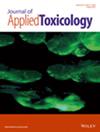Melissa officinalis Attenuates Diclofenac-Induced Hepatorenal Toxicity via AMPK/SIRT1 and STAT3/Nrf2 Pathways
Abstract
Purpose
This study aimed to assess whether Melissa officinalis (MO) or lemon balm could counteract the detrimental effects of diclofenac (DIC) on the liver and kidneys in male albino rats.
Methods
Forty adult male Wistar rats were randomly assigned to four groups (n = 10 per group): control, DIC (10 mg/kg intraperitoneally), DIC + MO (10 mg/kg DIC IP + 200 mg/kg lemon balm orally), and MO only (200 mg/kg orally) for 28 days. Biochemical, molecular, and histopathological evaluations were conducted to assess organ function and tissue integrity.
Results
DIC significantly impaired hepatic and renal function (p < 0.05), evidenced by elevated serum alanine aminotransferase (ALT), aspartate aminotransferase (AST), and alpha-fetoprotein (AFP). Oxidative stress increased, as shown by higher malondialdehyde levels and reduced antioxidants, including glutathione and catalase (CAT). Inflammatory cytokines such as tumor necrosis factor-alpha (TNF-α) and interleukin-6 (IL-6) were also elevated. Histopathological analysis indicated severe tissue damage and cell death in the liver and kidneys from DIC. However, adding MO alongside DIC mitigated these effects, improving both biochemical and histopathological parameters in the liver and kidneys. Gene expression analysis revealed upregulation of STAT3 and TNF-α and downregulation of AMP-activated protein kinase (AMPK), sirtuin 1 (SIRT1), and nuclear factor erythroid 2–related factor 2 (Nrf2). Coadministration of MO significantly reversed these alterations (p < 0.05), improved tissue architecture, and restored antioxidant and anti-inflammatory balance.
Conclusion
MO provided substantial protection against oxidative damage and functional disturbances induced by DIC in liver and kidney tissues.

 求助内容:
求助内容: 应助结果提醒方式:
应助结果提醒方式:


